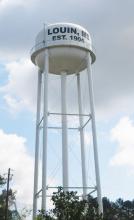Cummington Connect Turns One Massachusetts Town From a Broadband Desert to an Oasis
Western Massachusetts stands as maybe the most dynamic place for municipal broadband at the present, with almost two dozen cities pursuing projects. And while the slate has many similarities between them, each has a unique starting point and has followed its own path along the way.
Cummington (pop. 800), which straddles the banks of the Westfield River thirty miles northwest of Springfield and twenty miles east of the New York border, has just completed its municipal Fiber-to-the-Home (FTTH) network. It has been almost a decade in the making, and despite seeing its share of obstacles along the way, residents can now look forward to years of fast, affordable Internet access.
Stuck on DSL
Ten years ago, Cummington had no high-speed Internet access options. Verizon offered the only DSL service in town, and its network in the area remained a relic of upgrades focused not on residents there but in the population centers to the east. Only half the town was covered, relegated to download speeds in the single digits and upload speeds at a fraction of that. The rest of the town’s residents were stuck with satellite service, which was even slower and more unreliable with changing weather.
The story of broadband for western Massachusetts is a winding road. At the end of the first decade of the twentieth century, the state of Massachusetts received initially funding for its MassBroadband 123 backbone network (currently, it’s operated by KCST USA, formerly Axia Networks), which would bring middle-mile infrastructure to schools and libraries in 120 towns and communities in the area (including a spur in Cummington [pdf]) by 2014. Residents, however, remained unconnected.













